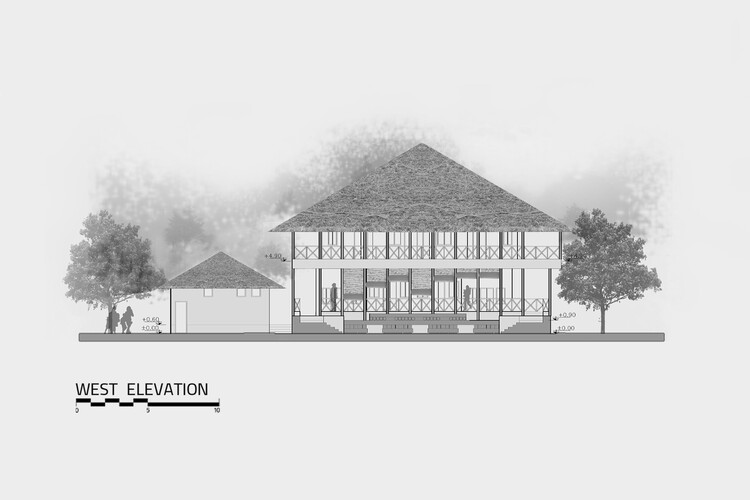Ghadimkhoone Ecolodge Resort / Bee Architects + Haft Shahr Aria
Ghadimkhoone Ecolodge Resort / Bee Architects + Haft Shahr Aria


Text description provided by the architects. Ghadimkhoone is an eco-lodge resort located in Iran, Gilan, Astaneh-ye Ashrafiyeh, Lasku Kalayeh. The aim of this eco-lodge was formed based on using patterns, methods, and executive details of Gilan’s local houses as well as sustainable architectural criteria, to build an eco-lodge resort that meets the needs of today’s tourists. With this explanation and considering the obsolescence of Gilan’s local house construction methods and the very limited sources and books of Gilan’s exact methods of construction, the first challenge of the project was to find these methods. The second was to build a sustainable building with maximum resilience, minimum negative environmental impact, restoration of materials, and their return to the life cycle. The third challenge and one of the main ideas of the project were to design a place to “stay”.




Ghadimkhoone eco-lodge contrary to usual patterns of hotels and residential spaces should not have been a place for a shortstop but a place that is designed for users to pause and “stay”. In Ghadimkhooneh with the usage of Gilan’s local architecture patterns the attempt was made to create a space for presence, the interaction of people, and a comprehensive touch of Gilan local architecture up close. This presence differs from presence in hotels and other frequent residential places’ lobbies, and it is accompanied by an immediate understanding of space. In Ghadimkhooneh, today’s life is flowing in the soul and body of yesterday, and this combination of the necessities of today’s life with yesterday’s space spirit creates a postmodern atmosphere for users.

Construction and material – In the foundation (in the local language Shakil), in the third and fourth row we have timbers that belonged to destroyed old houses in the area that were supposed to be used in coal factories. Trying to take a step toward sustainability, we gathered these timbers to reuse them to give life to a new building instead of being destroyed and creating pollution. As in the fifth and sixth row ( Boneh dar and Sarkesh, main beam and balancing of the building), we used timbers which were from local lampposts in 1974 and 1975 (they were being stored and gradually destroyed in the electricity department of the region). As result, we were able to build a new building with the support of 50-year-old materials.




The roof structure is composed of two rows of timber side beams (Ajar and Sarchoob). These are respectively from local reeds and poplar wood. All the connections of the structure were without the usage of new elements (nail and screw), instead, the usage of hand-woven rice stems (locally called Veris), which are lightweight, native, locally accessible, and affordable. In this project with the usage of materials from Gilan’s rice fields and dense woods (important sources for building materials in the area), we tried to revive the identity of indigenous architecture adapted to the climate. The final covering of the four-slope roof (because of the intensity of rain in the area) is through another local method using Gali (plant fibers locally used for rooves) which is called Gali-poosh.








